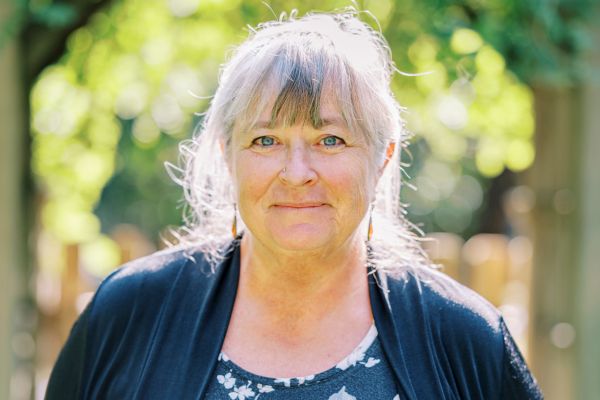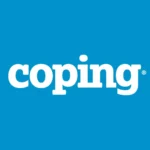Remission Quest
A Medical Sociologist Navigates Cancer
by Virginia Adams O’Connell
During the first few weeks after my last PET scan, I experienced extreme anxiety. Having studied the cancer experience, I was not surprised. While being released from treatment is celebrated, it also feels a bit like being pushed off a cliff. I was thrilled that the PET scan “look[ed] clear,” but my doctors and I knew that there still might be some cancer cells hiding in my body. As horrible as I had felt during treatment, I had taken some comfort in knowing that I was doing something active to address the problem. And I wanted to know what I could do now.
I maintained as many of my pre-cancer healthy lifestyle behaviors as possible during treatment to try to maximize my chance of achieving remission. I had every intention of continuing them post treatment, even though by this point, I was quite fatigued. But as had been true throughout my experience, I had no idea what had caused me to develop primary bone lymphoma, so I could not actively avoid potential triggers or adopt any additional behaviors that might help prevent a recurrence. But the survivor’s expectation was that I would actively work (as a result of becoming a “better self,” appreciating life, and having benefitted from teachable moments) to accept my responsibility for managing the risk of recurrence. The danger of a hyper-focus on the worthy transformative nature of a cancer experience and the narrow focus on the individual’s responsibility to better themselves, their health habits, and avoid recurrence draw attention away from the environmental factors outside our control that contribute to the development of cancer for all of us.
When I shared these anxieties with my oncologist, he acknowledged that my situation was very challenging. He went on to say that it might also be more challenging for me since at the time of my diagnosis, I had not had classic lymphoma symptoms, such as night sweats and enlarged lymph glands, so there might not be obvious signs of recurrence. After seeing my face drop, he quickly followed up with “Well, certainly, don’t play with Roundup!” (the active ingredient in the weed killer has been linked to an increased risk of non-Hodgkin’s lymphoma as well as other cancers, such as lymphocytic leukemia). As an avid organic gardener, I never played with Roundup and would certainly not start now! He then emphatically said, “Well, just go out there and live your life,” while quickly following up with “But let me know immediately if something doesn’t feel right.” At this point in the experience, hardly anything about my body felt right. I was bald, constantly nauseated, and extremely fatigued. But I understood what he was trying to tell me.
Assessing My Damage and Managing My Fear of Recurrence
My assessment of my damage began shortly after I was released from treatment. During treatment, focusing on “one day at a time” left little space to think about the damage, to think about how my body might be permanently changed by this illness journey. Would my hair grow back? Would it be the same or different? Would I be able to play soccer again, and squash? Would I regain the strength in my right arm? How long would it take to assess which impairments were temporary and which were permanent?
I was unnerved after my first physical therapy appointment just weeks post treatment to assess my right arm and shoulder, and to also assess my core and leg strength. For the first time in my life, my left arm was evaluated as stronger, more mobile, and more stable than my right. As my therapist put me through my paces, I almost cried, as I could not keep my right arm stable. It kept shaking as she asked me to hold it in various positions and to resist her movement of my arm. I was so upset because I did not really know how bad my right arm and shoulder were until then. And I was sad, not because I did not think that I would be able to regain a lot of strength and mobility with her help but because it was my right arm. I am right handed, and my right arm is the way I most fully have interacted with and manipulated my world. It is primarily with my right arm that I write, cook, shake hands, garden, and so forth. I realized that this vital extension of myself had been damaged.
Some of the damage I felt also ignited my fear that the cancer was recurring. Every time I felt a twinge in my arm, or my leg, or my pelvis, it was hard not to feel the fear rise in my throat, especially since pain had been my primary symptom. Was it back? My physical therapist was able to help me interpret some of the particular pains I was experiencing based on our exercises, and that helped me take a few breaths and reset my psyche. But I was also instructed by my oncologist and my physical therapist to keep a journal noting when I had pain and discomfort and to keep track of the location of the pain, when I first noticed the discomfort, and whether it was getting better or worse.
The level of fear I felt in these early weeks and months was, frankly, debilitating. I found it nearly impossible to get back to “living my life” when I felt derailed by even the most minor aches and pains. But living at a stage of such heightened anxiety is simply not sustainable. You must learn to let the fear go in bits, and with each passing week, it did start to get a little easier. I understood that for the rest of my life, I would be more vigilant. But I also hoped that with each week and month, with each step closer to the magical five-year mark, the vigilance would not feel so heavy. I came to accept that the fear would never fully go away, but I tried not to feed it. And as my hair started to regrow, and the nausea started to subside, I celebrated the body that was no longer having to manage infusions of antibodies and poisons, and I started to walk a little faster and even jog a bit.
Virginia Adams O’Connell is an Associate Professor and Chair of the Department of Sociology and Anthropology at Moravian University, in Bethlehem, PA.
Excerpt from Remission Quest: A Medical Sociologist Navigates Cancer, by Virginia Adams O’Connell. Used by permission of Temple University Press. ©2025 by Temple University Press. All Rights Reserved.


